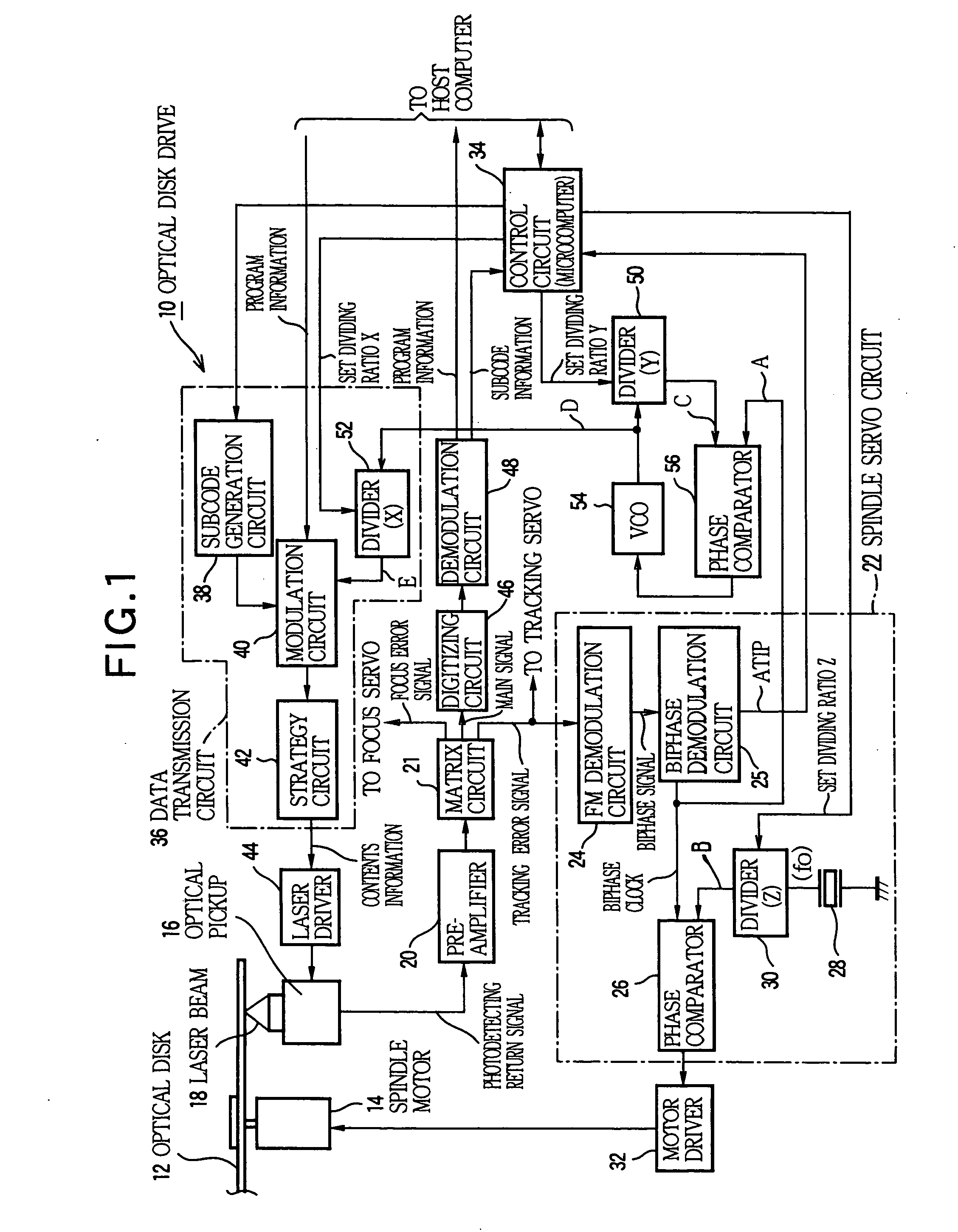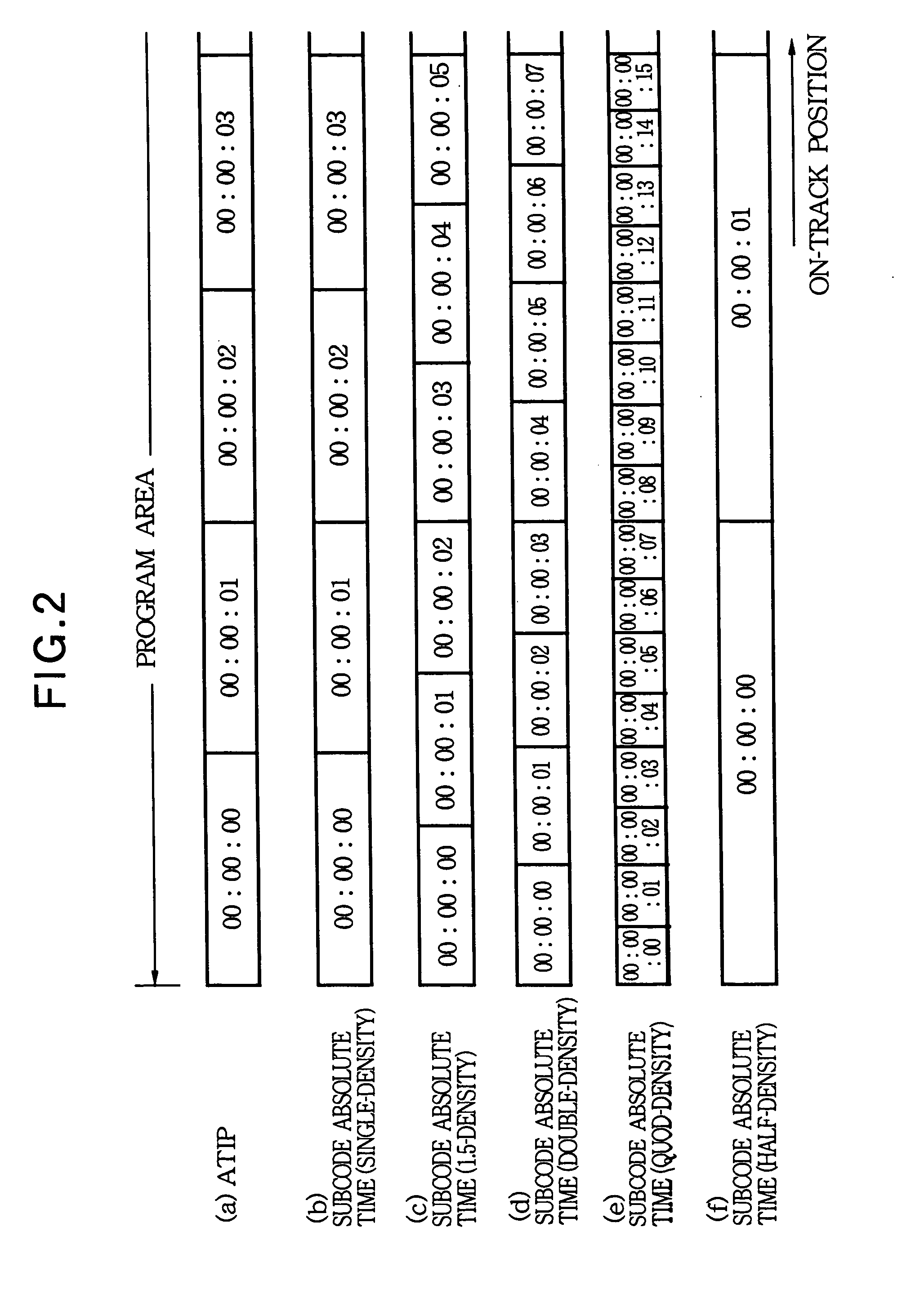Optical disk recorder for writing data with variable density
a technology of optical disk and data recording, applied in the field of optical disk recording method and optical disk recording apparatus, can solve the problem that the optical disk cannot use the density difference of data recording, and achieve the effect of shortening the recording time and reducing the number of recording steps
- Summary
- Abstract
- Description
- Claims
- Application Information
AI Technical Summary
Benefits of technology
Problems solved by technology
Method used
Image
Examples
first embodiment
[0041] First embodiment of the present invention is described below. The following describes a case where the present invention is applied to an optical disk drive (CD-R / RW drive) for recording and reproducing of data on CD-R and CD-RW disks. FIG. 1 outlines a system configuration of the optical drive. A optical disk drive 10 is connected to a host computer (not shown). An optical disk 12 is a CD-R or CD-RW disk. A wobbling pre-groove is formed on a recording surface of the optical disk 12. The wobbling is frequency-modulated according to ATIP information.
[0042] A spindle motor 14 rotates the optical disk 12. A laser beam 18 is irradiated from an optical pickup 16 for recording and reproducing information. A photodetecting return signal from each photodetecting element is output from the optical pickup 16 during the recording, and is input to a matrix circuit 21 via a preamplifier 20. The matrix circuit 21 processes the photodetecting return signals from respective photodetecting el...
second embodiment
[0059] Second embodiment of the present invention will be described in further detail with reference to the accompanying drawings. FIG. 3 is a block diagram showing a main configuration of an optical disk recording apparatus according to the present invention.
[0060] The optical disk 101 is provided with a continuous spiral track or substantially circular track from the innermost periphery to the outermost periphery in a recording area. A linear density control signal or index signal is overlapped with this track for ensuring the recording linear density of data to a constant value. In this example, the linear density control signal is a wobble including an ATIP (Absolute Time In Pregroove) time code as absolute time information. While the spindle motor (SPM) 102 rotates the optical disk 101, the wobble signal or index signal is read from the optical disk 101 via the pickup 103, and is supplied to the PLL / wobble decoder 104. The reference clock generator 106 generates a constant refe...
PUM
| Property | Measurement | Unit |
|---|---|---|
| frequency | aaaaa | aaaaa |
| frequency | aaaaa | aaaaa |
| clock frequency | aaaaa | aaaaa |
Abstract
Description
Claims
Application Information
 Login to View More
Login to View More - R&D
- Intellectual Property
- Life Sciences
- Materials
- Tech Scout
- Unparalleled Data Quality
- Higher Quality Content
- 60% Fewer Hallucinations
Browse by: Latest US Patents, China's latest patents, Technical Efficacy Thesaurus, Application Domain, Technology Topic, Popular Technical Reports.
© 2025 PatSnap. All rights reserved.Legal|Privacy policy|Modern Slavery Act Transparency Statement|Sitemap|About US| Contact US: help@patsnap.com



